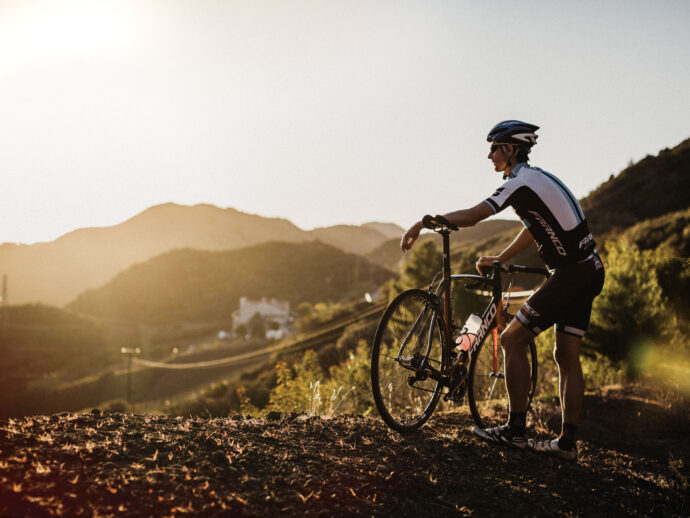
Brendan Brazier is a professional Ironman triathlete and leading authority on plant-based performance nutrition. Surprisingly, his journey to peak performance through a plant-based diet wasn\’t always smooth sailing.
In 1990, it became clear to me that if I were going to have a chance at racing professionally, I’d need to put in significant training hours. In many cases, when preparing for Ironman, more is better. Packing in a huge volume of low-intensity swimming, cycling, and running, just chipping away every day, is what it takes. It’s this that builds an efficient engine.
And for an event as long as Ironman, efficiency is key. So, I knew that a lot of work lay ahead of me. And, I knew that I was going to have to recover from it all for it to be effective. Though more is better during the base training phase for Ironman, the possibility of overtraining is real.
Yet, as I would come to realize, there is no such thing as overtraining—just under-recovering. This perspective changed my thinking and spurred me on to a single focus: recovery. What facilitated fast recovery? How could I get my muscles, glands, and basically all of my body’s systems to renew and regenerate more quickly? Suspecting that what I eat may play a role, it was this question that got me into the world of nutrition.
I tried many different ways of eating: high-carb, low-carb, high-protein, low-fat … the whole spectrum. And then I tried a vegan diet, completely plant-based. It didn’t work either. I was tired, felt weak, had inflamed joints, and I certainly wasn’t recovering quickly from training. But I soon realized I’d made the mistake that many do: I’d become a junk-food vegan. Or at least very close to it. I was filling up on refined starch from pasta and bread. And while I was more than satisfying my caloric needs, my nutritional requirements were not being met.
So essentially, I was over-feeding, yet under-nourishing myself. Vitamins, minerals, phytonutrients, antioxidants, complete proteins, and essential fats were lacking. This is, of course, common for those who eat a diet comprised of refined foods, ones that are calorie rich, but nutrient poor.
But, with some basic research, I learned what I was missing. I began making a blender drink, one that was packed with nutrient-rich ingredients: flax, hemp, pea protein, chlorella, spinach, kale, maca, enzymes, and probiotics. It tasted horrible. But it worked. The constant hunger subsided, my energy level rose, and inflammation was diminished. I began sleeping more deeply, and therefore requiring less of it. It was life changing. My training soared to a new level: I was able to pack in an inordinate amount of volume and therefore improve at a faster rate than others I trained with.
This was the first step toward a full-time career as an athlete. I really do believe I owe my professional career to the attention I paid to detailed nutrition. From there I raced full-time from 1998 until 2004. And then, in 2004, after improving the flavour and texture, of course, that horrible-tasting blender drink evolved into what would become the first Vega product.
Times have changed. Now, there are many elite athletes, their talents spanning every type of sport, encompassing strength to endurance, who follow an entirely plant-based diet.







